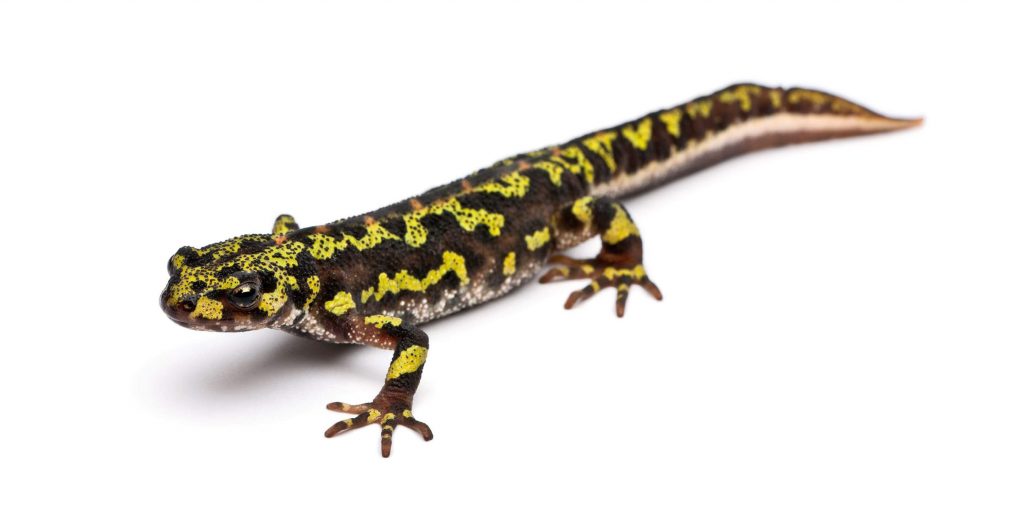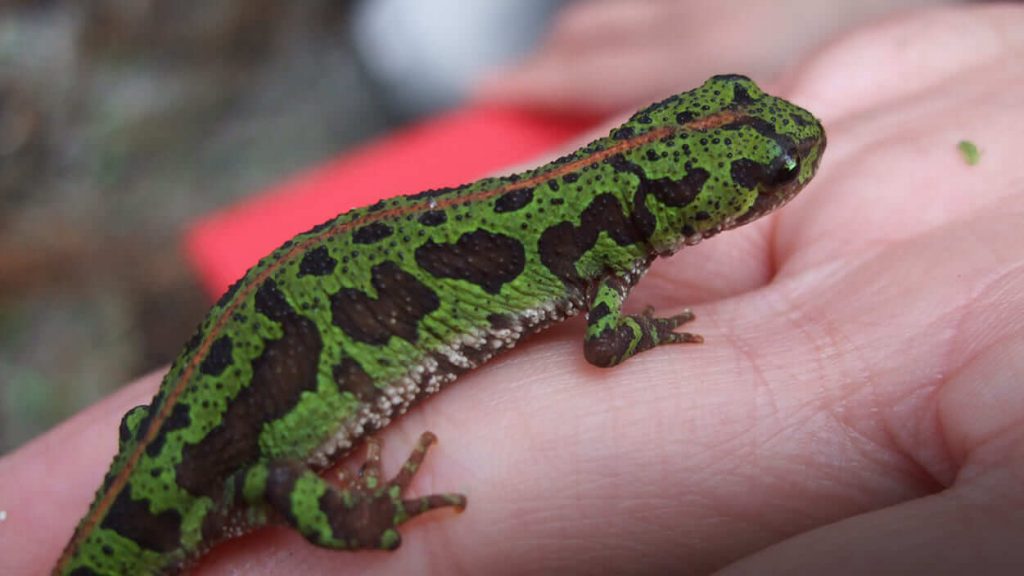Agile in water but more hesitant on land, this amphibian prefers damp and shady habitats to live and hunt. We are talking about the marbled newt, which can only be found in parts of Portugal, Spain and France. The colouring on its back, which is green with black spots, gives it its name.
With its flattened head and body, and long tail, the marbled newt (Triturus marmoratus) is an amphibian that is native only to certain parts of Portugal, Spain and France, mainly in temperate climes. In Portugal it occurs mainly in the central and northern parts of the country, north of the Tagus River. South of here another species with which it has many similarities, the pygmy marbled newt, is predominant. Triturus pygmaeus was considered a subspecies until 2001.
The adult marbled newt has a rough, granular-looking back with a vivid green colouration, speckled with dark patches and spots distributed over its body. Its belly is light – white, cream or greyish in colour. Like other amphibians, its eyes are positioned prominently on each side of its head. It has strong limbs, ending in four long toes on its front legs and five toes on its hind legs. Its tail is long, the same size as the body and sometimes longer.
The marbled newt’s life is spent both in and out of the water, depending on the time of day and also the stage in its life. While by day this agile swimmer prefers to keep hidden in damp places and stretches of water under rocks and foliage, at night it roams in more open areas on dry land, although it is less resourceful here.
During breeding season however, it is confined to aquatic environments—bodies of water with weak currents, such as ponds, springs, streams, pools, small lakes, or rivers, surrounded by dense vegetation, with the possible presence of rocky cavities where it can hide. The beginning of breeding depends on the weather conditions and the breeding site itself, but generally starts with the first autumn rains, although it may be delayed until February, and extends throughout spring.
The female produces 150 to 400 eggs, which are laid one by one on submerged plant leaves. The small larvae hatch after a few days, feeding on insects, water worms, and also on small crustaceans. The duration of the larval stage is variable, depending on water temperature and available food. Usually, between eight and ten weeks later the young start to breathe through their lungs and are ready to leave the aquatic environment. At this stage, juvenile newts have less pronounced colours than the adults, ranging from dark green, to brown and black.
Their diet includes slugs, snails, insects, worms, freshwater crustaceans, insect larvae, and even amphibians. In the water, their predators include the invasive crayfish (Procambarus clarkii) and the pond perch (Lepomis gibbosus), as well as storks and herons; on land, snakes and carnivorous mammals feed on them.
In Portugal, as in other countries where it is found, its conservation status is classified as being of Least Concern (LC) , according to data from the International Union for the Conservation of Nature. The species is protected by Annex III of the Bern Convention and Annex B-IV of the Habitats Directive. Among the threats it faces are invasive aquatic species that feed on it, water pollution, and the decline in temporary ponds and wetlands, which is aggravated in drought conditions.





